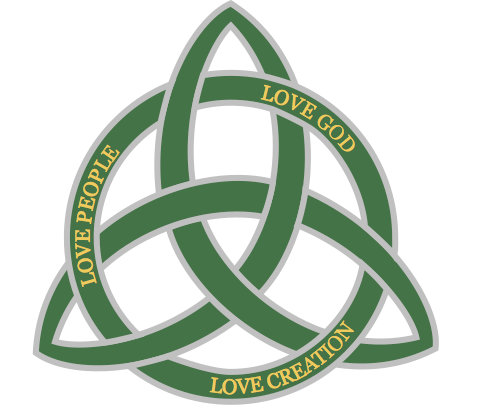Intentions
By Courtney Dernier
I am an English teacher. And, like most English teachers, I love to read. Poetry. Prose. Comics. The wider the variety, the better! Now, enjoying a bit of good writing is certainly not unique to educators, but suffice it to say that I like language and literary terminology of all kinds—metaphors, imagery, symbolism, and the like. I like to identify the author’s intention in writing; and, in-so-doing, I gain insight into his/her ideas. I’m convinced that is why I first became interested in Biblical text...because I like patterns.
In the world of literary analysis, patterns are often referred to as “motifs,” and they are, if nothing else, dependable. Patterns affirm the universal idea that all humankind is fractured. There are observable patterns in the flaws of those who threaten to become heroes on a pedestal: Moses, Noah, David, etc. While the stories of these characters of God give me insight into how God interacts with humankind, I am also reminded (sometimes gently, sometimes violently) that the Bible is the story of fallible individuals.
David was this glorious underdog of a savior, a shining beacon of hope for every youngest child who wanted to feel powerful and needed. Yet, as with other notable Biblical heroes, David is portrayed with flaws, and serious ones at that. I imagine many children brought up in the church experience a shock when they see their young slingshot-armed hero descend into the depths of murder and adultery. A well-intended youth turns power-hungry king. It’s a storyline we’ve seen before and will see again. Patterns are indicative of the fears, hopes, and realities (actual or perceived) of the world that produces them.
And willingly or otherwise, we contribute to the patterns surrounding us. We all have grand ideas: of projects, of careers, of our children’s behavior. And very rarely do the realities match the images that live in our minds. It takes blood, sweat, and tears to drag the fancies trapped inside our imaginations into the realm of reality. And in that dragging, in those birthing pains, flaws cling to our flawless fantasies. After all, what kid hasn’t dreamed, at the worldly age of seven (or twenty), of the day they will be “grown-up?” We all looked at what was, and imagined what could be, and created imaginary tales of spending all our money on candy or toys or, in my case, books. And as many of us reading this know, the reality of adulthood is far from the glittering horizon we dreamed it to be.
We live in a world of foibles, a result of our beautiful but, ultimately, broken attempts to make the abstract tangible. What we seek to create may not always match what is brought into existence, but the flaws in our creations, be they ill-fated Pinterest recipes or victims of an “We can fix that without hiring a plumber” attitude, often have the power to bring us into this great, overarching pattern of imperfect attempts at perfection. This world may appear ugly, but the flaws we manifest are often the clearest proof of the divine that connects us.
If we, in all of our flawed glory, were deemed “good” by our Creator, then so should we take courage in the face of our crumbling creations and ill-fated intentions that, what we do, while flawed, is part of a pattern that has endured and will endure.
So we acknowledge our common humanity and honor the clarity of our intent. We intend to make good choices. We intend to love our neighbor. We intend to love ourselves (that’s a tough one). We intend to honor our God. In all these attempts, fractured in the process of the amorphous becoming formed, we join with other beings whose intentions mirror our own. We join the pattern that shall endure.

